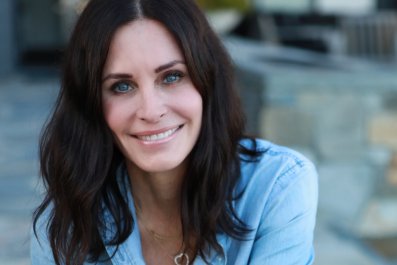
For the better part of a decade, we have been collecting data about the hurdles to women's career advancement. In particular, we've been interested in understanding how women who have made it through the gauntlet of gender bias, subtle discrimination and stereotypic assumptions about their capabilities—what we called "the office obstacle course" in our recent book, Glass Half-Broken: Shattering the Barriers That Still Hold Women Back at Work—assess the phenomena that disadvantage them and their peers.
One way we've investigated their views is through a series of surveys of female executives who are enrolled in women's leadership programs. These surveys allow us to take the pulse of women who have had long careers and thus experienced an array of obstacles, including those, such as the motherhood penalty (disadvantages that working mothers experience in pay and perceived competence compared to men and to women who don't have children), that tend to crop up at distinct career stages. These women have seen the leadership pipeline shrink around them as female colleagues exited or were stymied in their growth. They've seen the glacial pace of progress toward gender parity, too.
In the words of one of the women who responded to our most recent survey, "While we have a goal of parity in candidates, the results show that is not working. Yes we can say we look at men and women, but the men overwhelmingly get the job."
In the late 2010s, we asked such a group of women to share their perspective on the core processes that organizations use to manage a workforce: attracting job candidates, hiring, integration, development, performance assessment, compensation and promotion. Ideally, these steps ultimately lead to effective employee retention and engagement, and when executed free of gender bias, allow women to rise to leadership at rates equal to male peers.
What we heard from the women we surveyed indicated just how far from unbiased these processes remain. For most processes, the percentage who felt that women were "not at all" disadvantaged was in the single digits. For all processes, large majorities felt that women faced either "some" or "a great deal" of disadvantage. And two thirds said that companies weren't doing enough to engage and retain female employees.
While these results weren't a surprise, they were sobering, considering that they came from women who had climbed the ladder to C-suite and other executive roles, and yet still felt they and women like them weren't on equal footing.
Today, we are a just a few years out from these results, yet the world looks very different from when we collected this data. Not only has the COVID-19 pandemic taken an enormous toll on women's participation in the labor force and on worker well-being around the globe, but the national and international conversation about inequality in the workplace has been elevated to a prominence not seen in decades.

While the #MeToo movement of the late 2010s unquestionably heightened awareness about systemic discrimination at work, momentum around change accelerated exponentially in 2020 and 2021, as activists responded to the murder of George Floyd in Minneapolis, a killing spree targeting Asian women in Atlanta, and other violent acts by calling on leaders, including business leaders, to remedy the deep racial inequality that shapes all our institutions. At the same time, widening economic equality—a social ill that women of color are most harmed by—was thrown into even starker relief by the pandemic.
In the wake of these upheavals, what are senior women saying about the workplace today?
Incremental Progress
At the end of 2021, we asked a group of executives attending the same women's leadership program to respond to our survey about bias in organizational processes. We saw little change in the proportion—generally a small minority—saying that women were not disadvantaged at all in any given process. The playing field, these women made clear, is still fundamentally uneven.
As one respondent succinctly explained, "It is a vicious cycle. Women are given fewer opportunities; then, high-level positions require experience, thus selectively reducing the pool to fewer women." Another pointed out that even when women are given opportunities, they face conditions that undermine their success: "My career has mostly been in male-dominated workplaces. I have seen rare instances where a chance was given to a woman with the full support of leadership. When this doesn't happen, the women often struggle."
In one category, candidate recruitment (that is, job advertisements and other efforts to attract qualified job-seekers), we saw an uptick in the "great deal" of disadvantage category. While we're not sure what might be driving that shift, it could be a symptom of the pandemic's impact on caregivers, who are disproportionately women. Much ink has been spilled on women's exits from the labor force and the ways in which reliable child care has become exponentially more difficult to access. The women in our survey may be noticing that some companies are, unfortunately, reacting to these infrastructural issues by viewing women as less desirable candidates. In qualitative comments that some survey participants offered about recruitment, many noted that, despite pledges around gender parity, male managers often continue to focus on a narrow pool of candidates from their own personal network, seeing people like them as most suited for open roles.
Yet, while women didn't tell us that barriers had disappeared, on the whole their perception of the level of intensity and impact they have on women's careers did move in a positive direction. Apart from recruitment, there was a reduction in the proportion of women who characterized bias as having "a great deal" of impact on each process. Essentially, responses moved into the "somewhat" category almost across the board, shrinking the proportion who saw the barriers as quite dramatic.
We see this shift as suggesting incremental progress, and other components from the survey point to factors that may be driving it. For one, respondents felt there had been a recent jump in male ally-ship. They reported, on average, that before the onset of the COVID-19 pandemic, about 45 percent of men at their current employer could be characterized as allies for gender equity—a sizable proportion but one that rose to 52 percent today.
In qualitative comments, some described public commitments by their CEOs to achieve gender parity in senior management, and noted that these promises were indeed being executed. One woman said that her company had gone a step further, with the CEO calling on his team to take an active role: "[He] has asked that every rising senior woman be mentored by a senior executive man and specifically asked that man to serve as her ally."
The women also saw male ally-ship increasing broadly, not just at their own employers, with 34 percent reporting that they viewed men today as more engaged in advancing gender equity in the workplace, as compared to the pre-COVID era. This was double the proportion who said that men were less engaged today.
Building Momentum
There was also a positive uptick in respondents' perceptions of inclusion in the workplace: on average, respondents said they would characterize 62 percent of the managers at their companies as inclusive, compared to an average of 53 percent prior to 2020. And they also experienced greater solidarity for gender equity, with 37 percent saying that women had become more active in supporting female colleagues' advancement. (Just 4 percent felt the opposite had occurred.)
In earlier research for our book, we found that these factors—men stepping up, managers committing to inclusive action and entire companies embracing the need for dismantling the obstacles that limit women's careers—are the ingredients of organizational transformation. The positive trend in senior women's views of bias in the employee life cycle is, we believe, an outcome of these drivers of change increasing in magnitude in recent years.
Our recent survey results are encouraging, but more important than lauding these incremental yet meaningful shifts is building upon them. Are the upper reaches of leadership, beyond the obdurate glass ceiling, becoming more attainable? Our hope in writing Glass Half Broken was to provide companies and managers with tools to widen the fissures and smash the panes.
Momentum matters, too. Undoubtedly, the dedicated work of advocates and activists who have seized the moment to champion justice and equality while the world is listening has accelerated the pace of change. In fact, it's more than likely that the gains in both women's and men's engagement in the struggle for gender equity is in part fueled by the movements calling on companies to act in accordance with their professed values—in these turbulent times, there's a sense that change is possible, even when it comes to enduring problems.
Only time will reveal whether trends toward progress continue. But all of us can keep chipping away, crack by crack, toward equality.

Colleen Ammerman is director of the Harvard Business School Gender Initiative. Boris Groysberg is Richard P. Chapman professor of business administration at the Harvard Business School and a faculty affiliate at the Gender Initiative. They are coauthors of Glass Half-Broken: Shattering the Barriers That Still Hold Women Back at Work.












